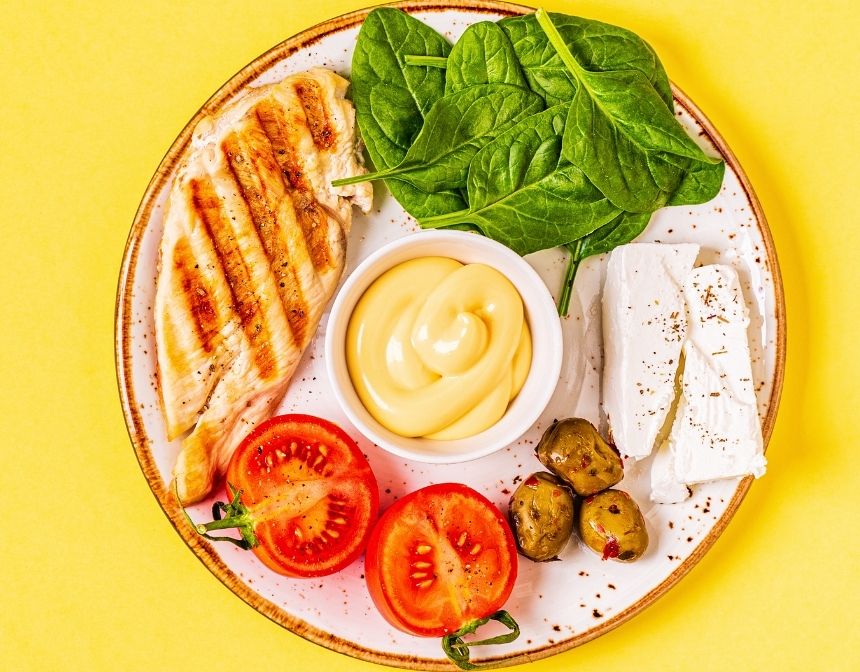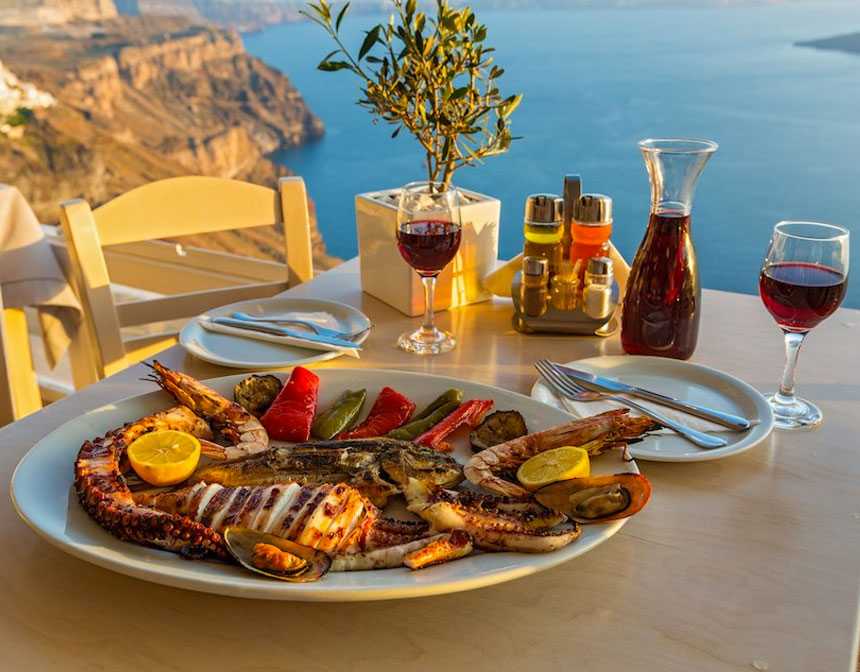Origins of The Paleo Chicken Stir-Fry
The stir-fry cooking method originates from Chinese cuisine, where it became popular for its ability to maintain the texture and flavor of ingredients. By quickly cooking over high heat, stir-frying locks in the nutrients of fresh vegetables while keeping them crisp and vibrant. This technique has been adopted across the world and adapted to various dietary preferences, including the paleo diet, which emphasizes whole, unprocessed foods, making this Paleo Chicken Stir-Fry a great match for anyone looking to maintain a healthy, balanced lifestyle.
The paleo diet, often referred to as the "caveman diet," is based on the idea of eating the same foods that our ancestors would have consumed. This includes meats, fish, fresh vegetables, fruits, nuts, and seeds, while eliminating processed foods, grains, dairy, and legumes. By using ingredients like coconut aminos instead of traditional soy sauce and coconut oil for stir-frying, this recipe stays true to paleo principles without sacrificing flavor. The result is a delicious, nutrient-dense meal that's packed with protein, healthy fats, and fiber.
What makes this Paleo Chicken Stir-Fry so versatile is the ability to customize it to your liking. Whether you’re using different vegetables or adding some spice with extra red pepper flakes, this dish can easily be adapted to fit personal preferences. It's also a great way to clean out your fridge—just toss in whatever veggies you have on hand! The simplicity of stir-frying, combined with fresh, wholesome ingredients, makes this a go-to meal that’s perfect for busy weeknights while still delivering on flavor and nutrition.
Substitute Vegetables In Stir-Fry
The beauty of stir-frying is its flexibility—most vegetables work well with this cooking method, as long as they are cut into uniform sizes for even cooking. Here are some great vegetable substitution ideas for your Paleo Chicken Stir-Fry:
1. Snap Peas or Snow Peas
Why It Works: These peas add a crisp, slightly sweet crunch to the dish, balancing out the tender chicken and sauce.
2. Mushrooms
Why It Works: Mushrooms bring an earthy, savory flavor that adds depth to the stir-fry. Shiitake, button, or portobello mushrooms all work well and cook quickly.
3. Asparagus
Why It Works: Asparagus is tender yet crisp and pairs beautifully with the flavors of the stir-fry sauce. Cut the stalks into bite-sized pieces for easy cooking.
4. Spinach or Kale
Why It Works: Leafy greens like spinach or kale wilt quickly in a stir-fry and provide a boost of nutrients. Simply toss them in at the end for a quick sauté.
5. Green Beans
Why It Works: Green beans maintain their firmness during stir-frying, offering a satisfying crunch. Trim and slice them into manageable lengths.
6. Cauliflower or Broccoli
Why It Works: Both of these cruciferous vegetables hold up well in stir-frying and absorb the sauce beautifully. You can even use cauliflower rice as a grain-free base for your stir-fry.
Feel free to experiment with other vegetables you love. Just remember to adjust the cooking time based on the density of the vegetable—harder veggies like carrots and broccoli may need a bit more time, while leafy greens and mushrooms cook quickly.
Tips For Meal Prepping Paleo
Meal prepping while following the paleo diet can save time, ensure you always have nutritious options, and help you stick to your goals. Here are some paleo meal prepping tips to make the process smoother and more efficient:
1. Batch Cook Proteins
Why It Works: Cooking large portions of protein (like chicken, beef, or fish) in advance makes it easier to assemble meals throughout the week. Roast or grill chicken breasts, bake salmon, or prepare ground beef for quick meals.
Tip: Store proteins in airtight containers and refrigerate for up to 4 days or freeze for longer storage. This makes it easy to grab pre-cooked protein to toss into stir-fries, salads, or wraps.
2. Chop Vegetables Ahead of Time
Why It Works: Pre-chopping vegetables like bell peppers, carrots, onions, and broccoli saves time during the week. You can store them in the fridge, making it easy to throw them into stir-fries, salads, or sheet-pan meals.
Tip: Store chopped vegetables in airtight containers, separated by type. Hardy vegetables like carrots and bell peppers can last up to a week, while leafy greens like spinach should be used sooner.
3. Use Paleo-Friendly Sauces and Marinades
Why It Works: Having paleo-friendly sauces like coconut aminos, homemade pesto, or avocado-based dressings on hand adds flavor and variety to your meals. Make a few different sauces and store them in the fridge for easy flavor boosts during the week.
Tip: Batch make paleo sauces like tahini dressing, chimichurri, or homemade BBQ sauce. They last for about a week and can enhance multiple dishes.
4. Prepare Starches and Substitutes in Bulk
Why It Works: Paleo-friendly sides like cauliflower rice, zucchini noodles, and roasted sweet potatoes can be made in bulk and stored for the week. Preparing these in advance makes meal assembly quicker.
Tip: You can freeze cauliflower rice or zoodles for up to 3 months, and they’ll thaw and cook quickly when needed.
5. Store Meals in Individual Portions
Why It Works: Storing meals in individual portions ensures that you have balanced, paleo-friendly meals ready to grab and go. It’s also easier to monitor portion sizes.
Tip: Use airtight glass containers or BPA-free meal prep containers for individual portions. Label each container with the date to track freshness.
6. Plan for Versatility
Why It Works: Meal prepping versatile ingredients like roasted chicken, sautéed vegetables, and paleo sauces allows you to mix and match components throughout the week. For example, you can use chicken in a stir-fry one night and in a salad the next.
Tip: Prepare different veggies, proteins, and sauces that can be combined in different ways to keep meals interesting while reducing prep time.
7. Freeze for Longer Storage
Why It Works: Certain dishes freeze well, like soups, stews, casseroles, and cooked proteins. Prepping meals in bulk and freezing them allows you to have ready-to-go paleo meals for weeks when you're short on time.
Tip: Store meals in freezer-safe containers or bags, label them, and thaw in the fridge the night before you plan to eat them.
By following these meal-prepping tips, you'll always have delicious, paleo-friendly meals ready to go, making it easier to stick to your diet and avoid reaching for non-compliant foods when you’re in a rush.
How To Store Paleo Chicken Stir-Fry?
Storing your paleo meal prep properly is essential to maintain freshness, flavor, and safety throughout the week. Here's a guide on how to store different components of your paleo meals:
1. Storing Cooked Proteins
Refrigerator: Cooked meats like chicken, beef, pork, and fish can be stored in the refrigerator for up to 3-4 days. Make sure they are in airtight containers to prevent drying out or absorbing other food odors.
Freezer: For longer storage, cooked proteins can be frozen for up to 3 months. Freeze them in individual portions using freezer-safe bags or containers, and label them with the date for easy tracking.
Reheating Tip: When reheating, use a skillet or oven to avoid drying out the meat. Add a splash of broth or water to retain moisture.
2. Storing Vegetables
Chopped Raw Vegetables: Vegetables like bell peppers, zucchini, carrots, broccoli, and cauliflower can be chopped ahead of time and stored in airtight containers in the fridge for up to 5-7 days. Use paper towels inside the container to absorb excess moisture and keep them fresh.
Cooked Vegetables: Store sautéed, steamed, or roasted vegetables in the fridge for 3-4 days. If you want to freeze cooked vegetables, blanch them first to preserve texture and color, then freeze them for up to 3 months.
Freezer Tip: Freeze vegetables in a single layer on a baking sheet before transferring them to a freezer bag to avoid clumping.
3. Storing Paleo-Friendly Starches
Cauliflower Rice: Store pre-cooked cauliflower rice in the refrigerator for up to 4 days. Alternatively, freeze it for up to 3 months in airtight bags. To reheat, sauté in a pan with a little oil or steam in the microwave.
Zucchini Noodles (Zoodles): Zoodles are best made fresh, but if you need to store them, place them in the fridge in an airtight container lined with paper towels to absorb excess moisture. They should last up to 3 days.
Sweet Potatoes: Roasted or mashed sweet potatoes can be stored in the refrigerator for 3-4 days or frozen for up to 3 months.
4. Storing Sauces and Dressings
Homemade Sauces and Dressings: Paleo-friendly sauces like coconut aminos, tahini dressing, or cashew cream can be stored in the refrigerator in a sealed jar or container for 5-7 days.
Freezing Sauces: Some sauces (like pesto or tomato-based sauces) freeze well in ice cube trays, then can be stored in freezer bags for up to 3 months.
5. Storing Full Meals
Refrigeration: If you're storing entire meals (like a stir-fry or salad), keep them in portioned, airtight containers in the refrigerator for up to 3-4 days. Keep components like sauces or dressings separate until serving to avoid sogginess.
Freezing Complete Meals: Some meals freeze well, such as soups, stews, and casseroles. Store these in freezer-safe containers for up to 3 months, and label with the date.
General Tips for Storing Paleo Meals
- Airtight Containers: Use high-quality, airtight containers or BPA-free meal prep containers to store your food. This prevents air from spoiling the ingredients and keeps everything fresh longer.
- Label and Date: Label your containers with the contents and the date they were prepared. This helps track how long the food has been stored and ensures you use it before it spoils.
- Reheating Tip: For reheating paleo meals, use the stovetop or oven when possible to preserve texture and flavor. If using the microwave, reheat in short intervals to avoid overcooking.
By following these storage tips, you can ensure your paleo meal prep stays fresh, flavorful, and safe to eat throughout the week!


















































